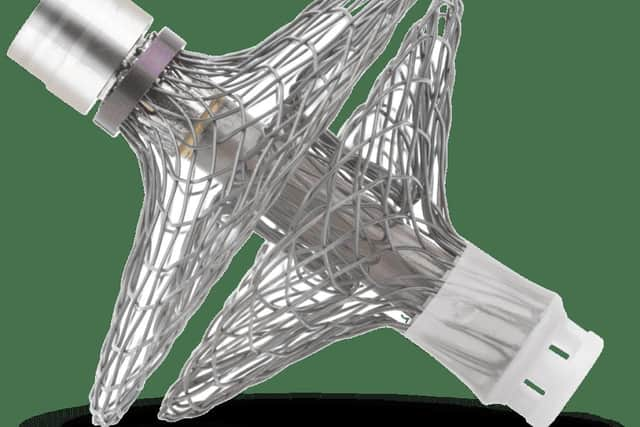A microcomputer inserted into hearts could save millions of lives - here's how it works


Medical technologists have invented a tiny microcomputer that could potentially save millions of lives.
The V-Lap device, created by medical company Vectorious, sits in the left atrium in the heart to directly monitor real-time blood pressure levels. The small surgically inserted device will be able to assist patients with medicine dosage and help doctors to indicate issues much quicker.
Advertisement
Hide AdAdvertisement
Hide AdThe CEO of Vectorious, Oren Goldshtein, said, "It will enable doctors to adjust the paid the device represents a real step change in management of heart disease for the one million people living with heart failure in the UK and many millions more worldwide.


“By having individual, long-term data for each patient, doctors will be able to react to each individual, rather than resorting to what often amounts to estimations that are currently the case.”
“It will enable doctors to adjust the patient’s medication early, remotely, and as a result avoid their condition worsening."
The V-Lap device sits in the left atrium of the heart and sends medical information to your doctor (Image: Vectorious)
Advertisement
Hide AdAdvertisement
Hide AdGlobally, this device has the ability to help over 26 million people worldwide suffering from heart failure.
Speaking to the BBC, Dr Zachary Whinnet from Imperial College London said, "Up until now we have never been able to get this data. We can adjust the medication at an early stage, which reduces symptoms and critically reduces admissions into hospital."
First patient to have it fitted
Andrew Smith, a 71 year old from Cornwall is the first person in the UK to have the device fitted. He had the surgery last November.
He told the Daily Mail, "Working in a high-pressure job 15 years ago, I had quite an unhealthy lifestyle. I’d drink a bottle of wine a day and weighed 16st, so at 6ft tall I was clinically obese. One morning I had excruciating chest pains and thought it was the return of a hernia I’d had. Rather than go to hospital, my wife Sue drove me to the GP."
Advertisement
Hide AdAdvertisement
Hide AdIt was confirmed later that Andrew was having a heart attack. He had the device implanted into his heart during an hour long procedure.
He added, "It’s wonderful to know I’m continually monitored to keep me safe, and I hope this will one day help many more patients"
The device is entirely wireless and patients don't need to undergo surgery to have the batter replaced such as with pacemakers. The V-Lap can be charged remotely by a chest strap worn by the patient twice a day. It can send information to any doctor that requires the patient observations.